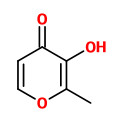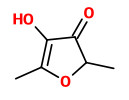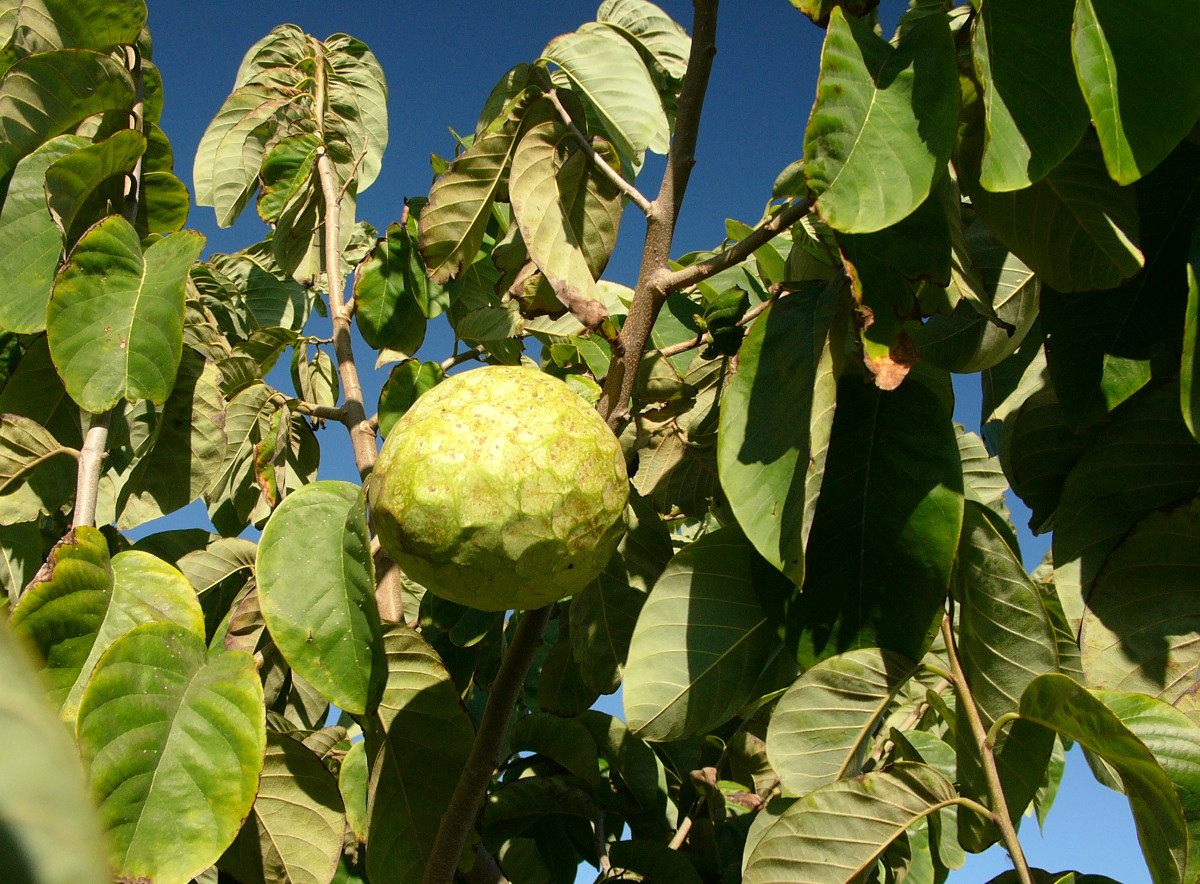Annona cherimola Mill. syn.Annona pubescens Salisb.; Annona tripetala Aiton - Annonaceae - cherimoya, custard-apple, Cherimoya
Evergreen tree, up to 7m tall, native to Central and South America, cultivated widely in the tropics and subtropics; leaves ovate, ovate-lanceolate, elliptic, obovate, thinly papery, abaxially tomentose, adaxially pubescent; inflorescences 1-3-flowered; petals outside greenish yellow to reddish, inside yellowish to whitish and basally purple-spotted, linear-oblong, 1.5-3cm, inner petals absent or reduced to minute scales; fruit cordate, conic, or ovoid, to 20×15cm, syncarp mostly green, pulp white; seeds flattened, ca.1cm, black-brown, turning paler when dry.
„The fruit, cherimoya, has good dessert qualities and is subacid and delicate. It is eaten raw, used in cooling drinks, and used in sherbets. It contains up to 18.4% sugar, 1.8% protein, and 0.4% fat.“ efloras.org
„Widely cultivated now, Annona cherimola is believed to originate from the Andes at altitudes of 700m to 2,400m although an alternate hypothesis postulates Central America as the origin of Annona cherimola because many of its wild relatives occur in this area. From there it was taken by Europeans to various parts of the tropics. Unlike other Annona species, A. cherimola has not successfully naturalized in West Africa, and in Australasia Annona glabra is often misidentified as this species.“ wikipedia
Main volatiles of A.cherimola fruit pulp (high-vacuum distillation/solvent extraction/GC-MS) were alcohols like 3-methylbutanol, hexanol, butanol, and linalool, as well as esters like butyl butyrate, 3-methylbutyl butyrate, and hexal butyrate. The residue of the distillate contained also 4-methoxy-2,5-dimethyl-3(2H)-furanone (DMF, mesifuran).
[Idstein, Heinz, Werner Herres, and Peter Schreier. „High-resolution gas chromatography-mass spectrometry and-Fourier transform infrared analysis of cherimoya (Annona cherimolia, Mill.) volatiles.“ Journal of Agricultural and Food Chemistry 32.2 (1984): 383-389]
„The trees bear fruit at four or five years old and do so only when carefully hand pollinated… Yields average 25-80 fruits per year (Colombia). In the 1950s, A.ceherimola was planted to replace diseased orange trees in Granada, Spain, and the crop is now common between there and the Mediterranean coast. In Jamaica the small, green, fragrant flowers are used to flavour snuff.“
[Minter, Sue. The greatest glass house: the rainforests recreated. HMSO, 1990, 81]
Analysis of volatile compounds of cherimoya cultivars from Madeira carried out by headspace solid-phase microextraction (HS-SPME) combined with GC-MS showed methyl butyrate, α-pinene, butyl butyrate, 3-methylbutyl butyrate, 3-methylbutyl 3-methylbutanoate, and 5-hydroxymethyl-2-furfural as major components. Olfactory interesting minor components are e.g. isoamyl acetate, hexyl butyrate, linalool, butyric- and hexanoic acid, maltol, furaneol, and γ-hexalactone.
[Comparative analysis of the volatile fraction from Annona cherimola Mill. cultivars by solid-phase microextraction and gas chromatography-quadrupole mass spectrometry detection. Ferreira, L., Perestrelo, R., Camara, J. S., Talanta, Vol.77(3), 2009, 1087-1096]
 3-methylbutyl butyrate (isoamyl butyrate) (sweet fruity banana) |  α-pinene (terpenic) |  maltol (sweet caramel) |  furaneol (sweet fruity) |  5-hydroxymethyl furfural (HMF) (buttery caramel) |
Main volatile compounds of fresh cherimoya fruit pulp isolated by SAFE were 3-methylbutyl 3-methylbutyrate (28.9%), 3-methylbutyl butyrate (20.7%), butyl butyrate (10.4%), methyl butyrate (7.5%), hexyl butyrate (5.8%), linalool (5.1%), methyl hexanoate (3.8%), and hexanol (3.3%). Minor components were e.g. benzaldehyde (0.2%), γ-hexalactone (trace), and maltol (0.3%).
The most odour-active compounds were (FD/OAV): 3-methylbutyl butyrate (1024/89000), α-pinene (1024/83), methyl 2-methylbutyrate (1024/80), 3-methylbutyl 3-methylbutyrate (512/69), butyl butyrtae (512/52), methyl hexanoate (256/44), 3-methylbutanal (256/40), ethyl butyrate (128/40), hexyl butyrtae (256/16), and linalool (256/15).
[Characterisation of odour‐active compounds in cherimoya (Annona cherimola Mill.) fruit., Pino, J.A., Roncal, E., Flavour and Fragrance Journal, 31(2), 2016, 143-148]

Cherimoya tree in Andalusia, Spain Wikimedia Commons, Author: Hannes Grobe, 2006 CC BY-SA 2.5

Annona cherimola, L’ Illustration horticole, vol.32 (1885) plantgenera.org